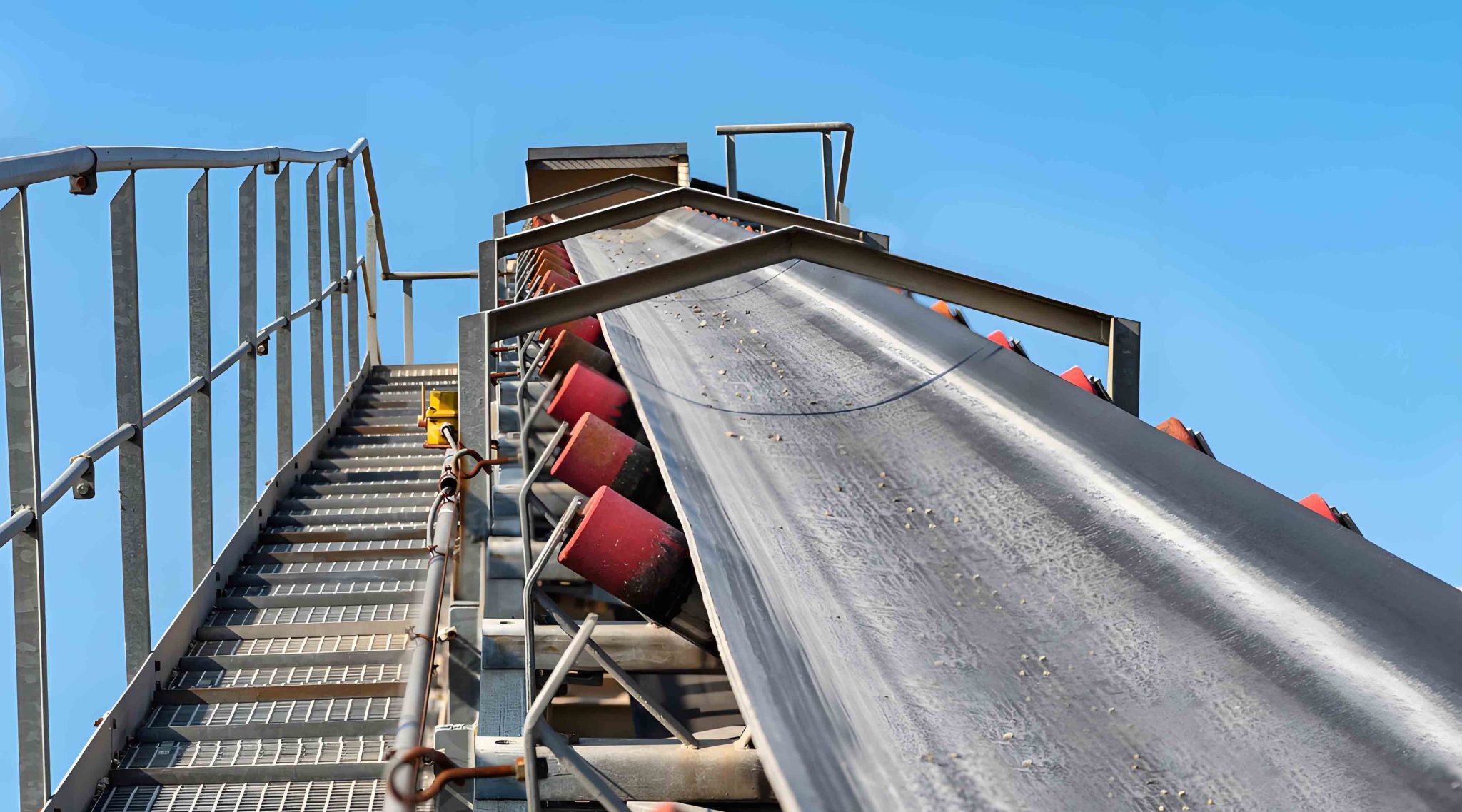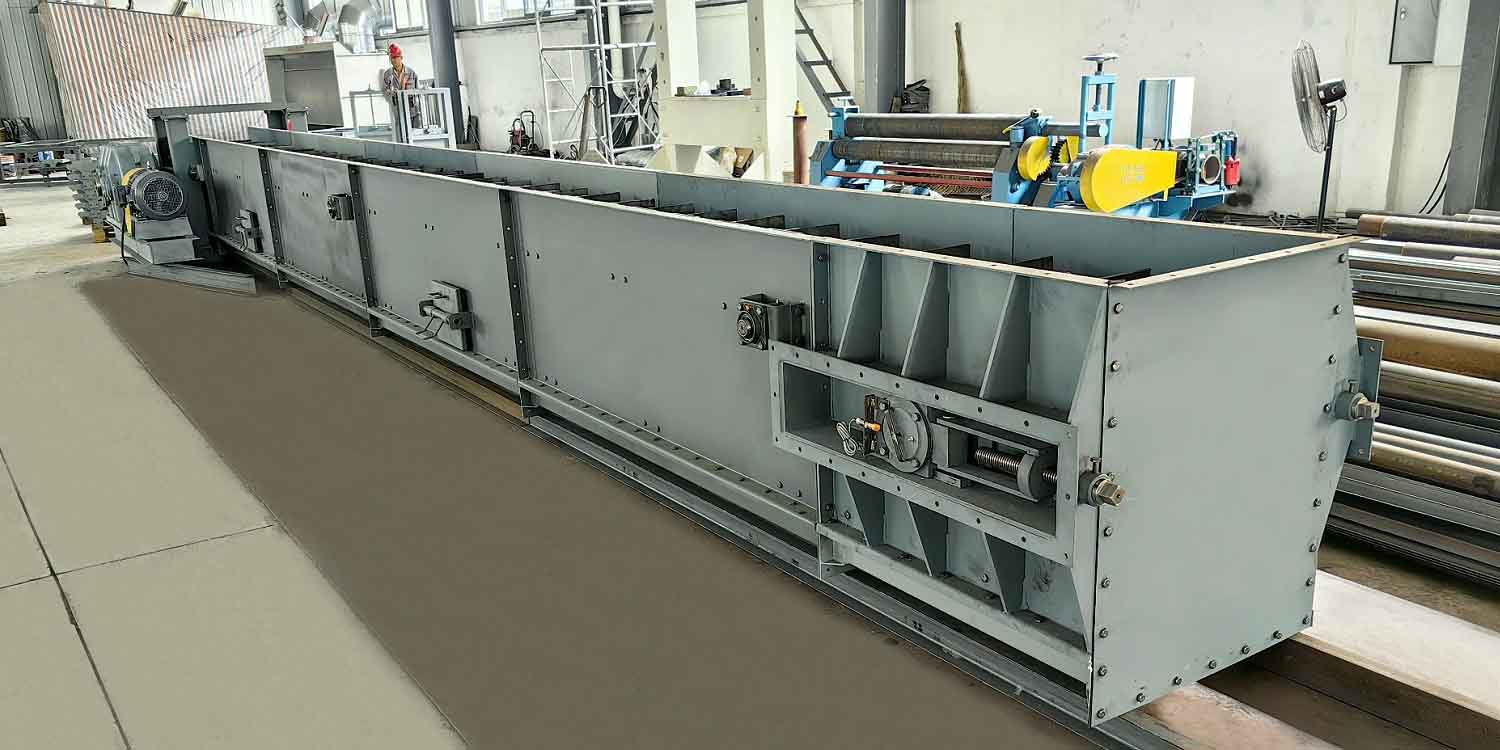In industrial production, selecting the right conveyor system is crucial. Each type of conveyor system has its advantages and disadvantages, suiting various materials and process requirements. This article will compare chain conveyors, air slide conveyors, and belt conveyors to help you make informed choices in powder conveying.
1. Chain Conveyor: Efficient Powder Handling
1.1 What is a Chain Conveyor?
The Chain Conveyor (model FU) is a new type of conveyor system designed to replace traditional screw conveyors. Its design overcomes many shortcomings of screw conveyors, particularly in sealing and wear resistance.
1.2 How Does a Chain Conveyor Work?
The FU chain conveyor drags materials using a continuous chain within a wide and high trough. The friction between materials pushes them forward, ensuring efficient transportation. This conveying principle is more advanced than that of screw conveyors and better suits modern production needs.
1.3 Advantages of Chain Conveyors
The rise of large-scale new dry cement creates new demands for powder conveying equipment. The FU chain conveyor can handle transportation needs from dozens to thousands of tons. However, when the transportation distance exceeds thirty or forty meters, power consumption and wear on components increase, making the FU chain conveyor seem less effective as a conveyor system. If you have concerns or needs regarding large-scale production, please contact us for the best solutions.

2.Air Slide Conveyor: An Efficient and Convenient Solution
2.1 What is an Air Slide Conveyor?
An air slide conveyor is used to transport easily fluidized powder materials (such as cement and fly ash). It utilizes airflow to convey granular materials and has three types: suction, pressure, and mixed flow.
2.2 How Does an Air Slide Conveyor Work?
The air slide conveyor uses the kinetic energy of airflow to make granular materials float and transport along the pipeline. When a high-pressure fan injects air into the permeable layer, materials are fluidized, reducing internal friction and enhancing flowability.
2.3 Applications of Air Slide Conveyors
Due to its low energy consumption and high efficiency, the air slide conveyor has become a cost-effective choice in the powder conveying field. It is widely used for transporting easily fluidized powder materials like cement and fly ash. However, installation requires a specific incline angle and must ensure that material moisture and particle size are within appropriate ranges.

3.Belt Conveyor: Versatile Bulk Transport
3.1 What is a Belt Conveyor?
A belt conveyor is ideal for bulk and granular materials. Its simple design and stable structure keep operational resistance low. The rolling friction between the belt and idlers reduces energy consumption and equipment wear.For an example of a successful implementation, see the Inner Mongolia Meifang Energy Co., Ltd DTII Belt Conveyor Project.
3.2 How Does a Belt Conveyor Work?
A belt conveyor transports materials continuously by using the belt and idlers together. It works efficiently for large volumes, long distances, and directional changes, making it widely applicable.
3.3Advantages and Disadvantages of Belt Conveyors
Belt conveyors excel in conveying powder materials. However, they can have challenges, such as sealing issues and high labor intensity for cleaning accumulated materials. These factors make many companies cautious when selecting them. In situations with high volume and long distances, belt conveyors are reasonable choices, but environmental pollution is a concern. If you face these challenges, the Darko team is ready to help.

4.Comparing the Three Major Conveying Equipment
Air slide conveyors, FU chain conveyors, and belt conveyors are the three “gems” in the powder conveying field. Air slide conveyors are preferred due to their low investment and operating costs, especially when material moisture and particle size are suitable. The chain conveyor is suitable for smaller volumes and shorter distances, though it has higher energy consumption. In applications requiring high volume and long distances, belt conveyors are indispensable, but concerns regarding sealing and environmental impact must be addressed.
5.A New Solution: Air Chain Conveyor
Recently, Darko launched the air chain conveyor, which fills the gaps left by traditional conveying equipment. This new design combines the benefits of chain conveyors and air slide conveyors. It adds an air chamber and permeable layer at the bottom. High-pressure air fluidizes materials and reduces internal friction, allowing for high volume and long-distance conveying.
The enclosed design of the air chain conveyor prevents material spillage, solving the problems traditional equipment often faces during operation. As a result, many companies are now choosing this solution.
6.How to Find the Perfect Conveyor System for Your Company’s Needs?
Do you need assistance in using conveying systems to transport bulk materials such as cement, asphalt, and grains? We design, manufacture, and install various types of conveying systems to meet your company’s needs. If you have any questions, please contact Darko.We look forward to providing you with professional services and support.We can provide customized solutions based on your company’s requirements.

